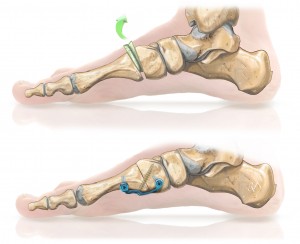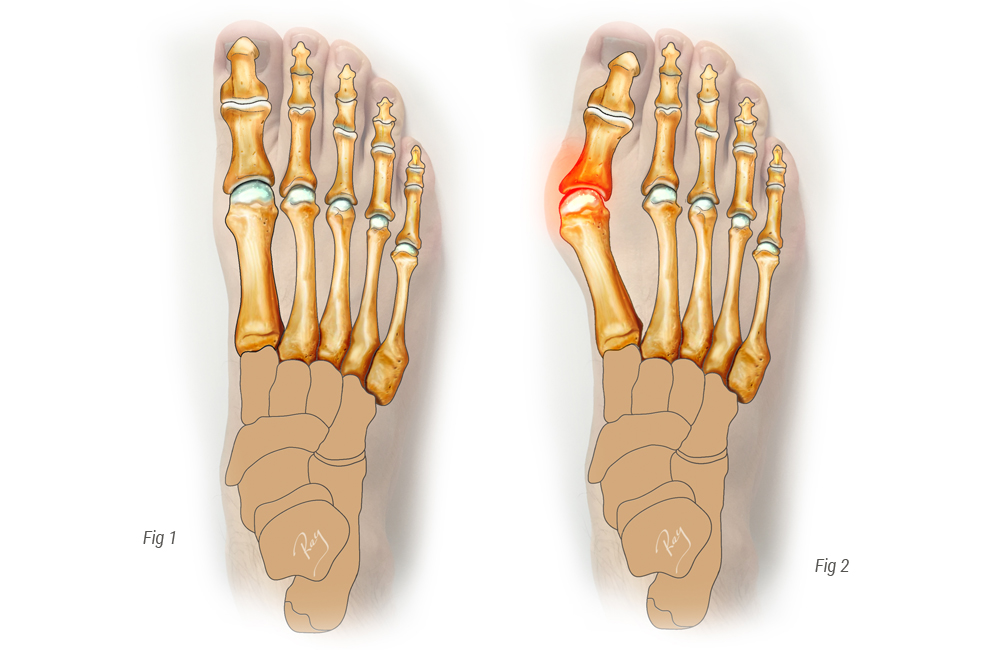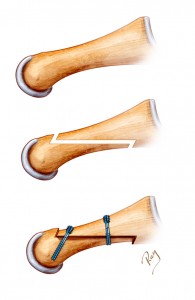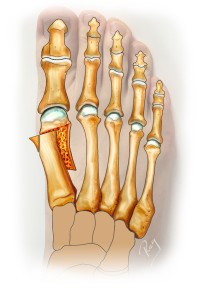When conservative treatment is inadequate, surgery should be offered.
Over 180 different procedures are available to correct a hallux valgus. Although some of these procedures have no place in the modern approach to this condition, most involve surgery on the first metatarsal bone. The main idea is to return the joint between the metatarsal and the phalanx to its original position, which realigns the toe and re-centres the surrounding tendons. The bone is usually cut (osteotomy) to move the metatarsal head to the desired position. Most of the techniques vary in terms of the specific action on the bone, the direction of the osteotomy, and its shape or length.
Surgery may be performed on both sides simultaneously. In such cases, recovery can be a little slower.
A technique called a Scarf procedure is one of the most popular. It consists of making a Z-step cut (Scarf) in the metatarsal, to realign the big toe. To maintain the position, the cut (the osteotomy) is attached with screws or using a special osteotomy technique without fixation. This procedure is usually performed by open surgery.
Scarf osteotomy
Fig. 1: “Z” cut, displacement and fixing using screws
Fig. 2: note the displacement of the bone cut laterally and excision of the remaining corner, aligning the toe
We regularly perform this surgery using a percutaneous minimally-invasive technique. This is a new approach and a small single incision of 1 mm is made. The osteotomy itself is identical to open surgery, but the minimal incision allows a faster recovery, near-invisible scars and limited pain. The fixation is carried out using either screws or a metal 2-mm diameter pin, which is removed 4-5 weeks after surgery. This removal is painless and carried out in the doctor’s surgery.
Finally, in cases involving a significant instability of the first metatarsal, during certain surgical revisions or in the presence of major deformity, the metatarsal osteotomy is not sufficient and the risk of recurrence high. In these cases, surgery carried out at the base of the metatarsal is the preferred option. The cartilage of the joint between the cuneiform and metatarsal bone is removed and the two bones are brought into close contact with a plate, allowing the fusion of this joint in an aligned position. This is an arthrodesis, that is a fusion of the joint (Lapidus arthrodesis).

Arthrodesis using a Lapidus procedure
Fig. 1: excision of joint cartilage
Fig. 2: bring the 2 bones into contact using a plate
In any event, your surgeon will discuss with you the best surgical option. Each foot is different and requires specific care to provide an optimal and sustainable correction.




